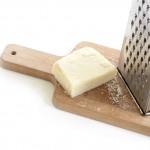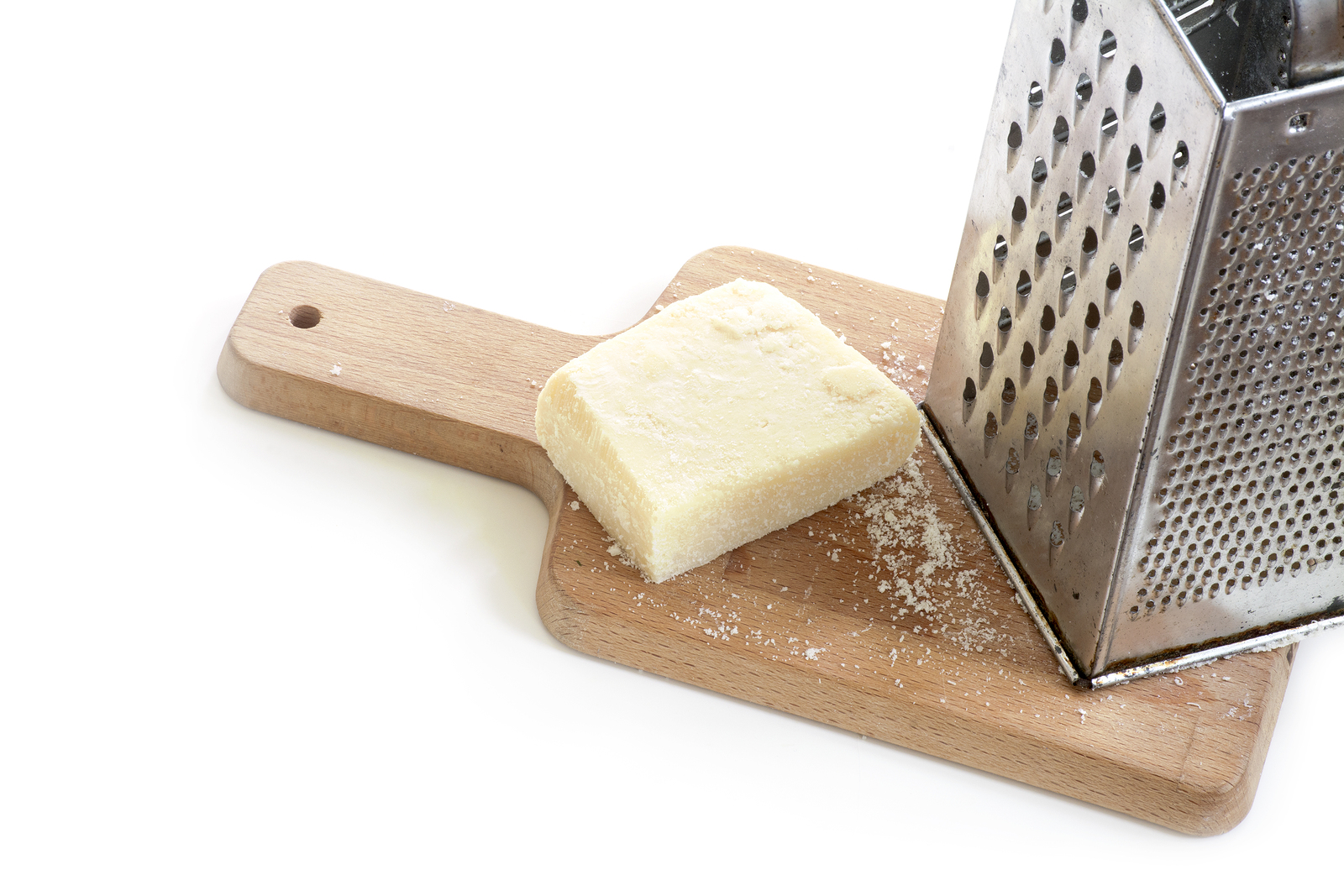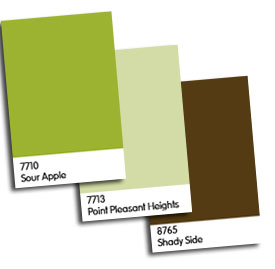Many of the common home improvement jobs we run into during the course of owning a home are of the small variety: little touch-ups on our trim, patching some dinged-up drywall, and stuff like that.
In and of themselves, these jobs take 10 minutes here, 20 minutes there. But, unfortunately, many of these little jobs require some specific tools. If we don't have the right tools on hand, the tendency is to put the job off, to wait on it until we get the right supplies.
And when we do that, it doesn't take long for the jobs to pile up into mountains of work. Suddenly the 20 minute job is joined by 14 other 20 minute jobs and we find ourselves looking at hours and hours of work.
Having the right tools on hand means you can accomplish jobs quickly and easily. You can basically cross them off your "To-Do" list before you even put them on. And best of all, compiling this "emergency kit" of "Must-Have" tools should cost as little as $50.
Let's Get to the List:
 ROLLER FRAMES. We recommend that you have at least one 9" roller frame and one 4" roller frame in your kit. Most folks already have one or more of these, but if you don't, then you'll want to make sure you pick up one or more. Having a 9" roller frame is great for those larger areas you need to paint. And the 4" frame is perfect for small jobs and touch-ups.
ROLLER FRAMES. We recommend that you have at least one 9" roller frame and one 4" roller frame in your kit. Most folks already have one or more of these, but if you don't, then you'll want to make sure you pick up one or more. Having a 9" roller frame is great for those larger areas you need to paint. And the 4" frame is perfect for small jobs and touch-ups.
 ROLLER COVERS. Well, it doesn't take a rocket scientist to see that your roller frames are only going to be useful if you've got a couple covers to go on them. At RepcoLite, we recommend that you have at least one 9" cover and one 4" cover on hand at all times. And, if at all possible, make sure they're new. Used roller covers can work out OK for priming, but if you're trying to do any touch-ups or repainting, you'll want a brand new roller cover.
ROLLER COVERS. Well, it doesn't take a rocket scientist to see that your roller frames are only going to be useful if you've got a couple covers to go on them. At RepcoLite, we recommend that you have at least one 9" cover and one 4" cover on hand at all times. And, if at all possible, make sure they're new. Used roller covers can work out OK for priming, but if you're trying to do any touch-ups or repainting, you'll want a brand new roller cover.
 9" ROLLER TRAYS. Most folks have a roller tray or two sitting around in their basement or their work room or possibly even their garage. However, if you're not one of those people, then get your hands on one. You could purchase a standard metal tray (which works well with cheap, disposable tray liners) or you could opt for a cheaper plastic tray like the one pictured at the left.
9" ROLLER TRAYS. Most folks have a roller tray or two sitting around in their basement or their work room or possibly even their garage. However, if you're not one of those people, then get your hands on one. You could purchase a standard metal tray (which works well with cheap, disposable tray liners) or you could opt for a cheaper plastic tray like the one pictured at the left.
 4" ROLLER TRAY. Besides making sure you have a standard 9" roller tray on hand, you should also buy a handful of disposable 4" trays as well. These 4" trays are great for all sorts of little touch-up work and other small projects. They clean up well and will easily last you through 3 or more paint jobs. Best of all, they usually retail for just over $1.00.
4" ROLLER TRAY. Besides making sure you have a standard 9" roller tray on hand, you should also buy a handful of disposable 4" trays as well. These 4" trays are great for all sorts of little touch-up work and other small projects. They clean up well and will easily last you through 3 or more paint jobs. Best of all, they usually retail for just over $1.00.
 THE CHINEX EXCALIBUR BRUSH from CORONA. OK, this is the one area where we'd recommend that you splurge a little. This brush from Corona is comprised of special filaments that are chemically engineered to release latex paints. This means a couple of things. First, the brush will apply latex paints remarkably well. Secondly (and more importantly, in my book), this means the brush will clean up easily. Literally, you can swirl this brush around in a bucket of water for about 30 seconds and then run it under a tap for 10-15 seconds more and it will be perfectly clean. That's why we recommend it for your "Emergency Kit". The ease with which it cleans up makes it less of a pain for you to switch colors and accomplish multiple little touch-ups quickly and easily.
THE CHINEX EXCALIBUR BRUSH from CORONA. OK, this is the one area where we'd recommend that you splurge a little. This brush from Corona is comprised of special filaments that are chemically engineered to release latex paints. This means a couple of things. First, the brush will apply latex paints remarkably well. Secondly (and more importantly, in my book), this means the brush will clean up easily. Literally, you can swirl this brush around in a bucket of water for about 30 seconds and then run it under a tap for 10-15 seconds more and it will be perfectly clean. That's why we recommend it for your "Emergency Kit". The ease with which it cleans up makes it less of a pain for you to switch colors and accomplish multiple little touch-ups quickly and easily.
 SPACKLING COMPOUND. Another key component for your "Home Repair Emergency Kit" is an 8 oz containter of White Lightning Lightweight Spackling Compound. It's easy to work with, it dries quickly and resists shrinking and, best of all, it's a breeze to sand! Having a tub of this stuff on hand at all times means you're always ready to patch a ding in your drywall or fill nail holes.
SPACKLING COMPOUND. Another key component for your "Home Repair Emergency Kit" is an 8 oz containter of White Lightning Lightweight Spackling Compound. It's easy to work with, it dries quickly and resists shrinking and, best of all, it's a breeze to sand! Having a tub of this stuff on hand at all times means you're always ready to patch a ding in your drywall or fill nail holes.
 PUTTY KNIVES. If you're going to stock up on a little bit of spackling compound, then you better get a few putty knives to go with it. Now, if you want some high-quality knives, you can buy them at RepcoLite for about $5.00 - $7.00 or so. But if you want something cheaper for your "Emergency Kit", look into the plastic knives we stock. Oh, they're not going to last forever, but if you're just filling a few holes or doing a little puttying, they'll be fine. You can purchase them in 1", 2" and 3" sizes--each one less than $1.00.
PUTTY KNIVES. If you're going to stock up on a little bit of spackling compound, then you better get a few putty knives to go with it. Now, if you want some high-quality knives, you can buy them at RepcoLite for about $5.00 - $7.00 or so. But if you want something cheaper for your "Emergency Kit", look into the plastic knives we stock. Oh, they're not going to last forever, but if you're just filling a few holes or doing a little puttying, they'll be fine. You can purchase them in 1", 2" and 3" sizes--each one less than $1.00.
 6" and 10" JOINT KNIVES. However, though plastic knives will work out alright for most patching work, you'll probably want to invest in one or two drywall joint knives. These are 6" or 10" knives that run between $4.50 and $7.25 and they're very handy to have if you're filling any large areas--a definite must-have in your kit.
6" and 10" JOINT KNIVES. However, though plastic knives will work out alright for most patching work, you'll probably want to invest in one or two drywall joint knives. These are 6" or 10" knives that run between $4.50 and $7.25 and they're very handy to have if you're filling any large areas--a definite must-have in your kit.
 TAPE. Always have a roll of safe-release painter's blue tape from 3M around. Sure, you could purchase cheaper rolls of tape, but the safe-release tape is nice because it can be used on so many different surfaces. It's the only tape I know of that can perform well on walls, trim, freshly painted areas, and wallpaper. Regular tape is limited as to where it can be used, but the safe-release 3M tape can be used in almost any situation you encounter. And, as an added benefit, this tape offers remarkably crisp cut-in lines.
TAPE. Always have a roll of safe-release painter's blue tape from 3M around. Sure, you could purchase cheaper rolls of tape, but the safe-release tape is nice because it can be used on so many different surfaces. It's the only tape I know of that can perform well on walls, trim, freshly painted areas, and wallpaper. Regular tape is limited as to where it can be used, but the safe-release 3M tape can be used in almost any situation you encounter. And, as an added benefit, this tape offers remarkably crisp cut-in lines.
 DROPCLOTHS. Besides masking tape, we'd also recommend that you purchase a 12' x 15' or so plastic dropcloth. These aren't expensive and they can be used for any number of little jobs that come up: from protecting your floors while you're painting to protecting your furniture from dust if you're doing any remodeling.
DROPCLOTHS. Besides masking tape, we'd also recommend that you purchase a 12' x 15' or so plastic dropcloth. These aren't expensive and they can be used for any number of little jobs that come up: from protecting your floors while you're painting to protecting your furniture from dust if you're doing any remodeling.
 SANDPAPER. One of the easiest tools to overlook is sandpaper, yet it's something that we used in many typical home repair projects. Whether you're repainting, patching walls, or painting furniture, sandpaper plays a critical role in the process. So get your hands on six to ten sheets of 220 grit, 150 grit, and 120 grit paper. Those are the most commonly used grits and having a stock of each one on hand will help you out immensely.
SANDPAPER. One of the easiest tools to overlook is sandpaper, yet it's something that we used in many typical home repair projects. Whether you're repainting, patching walls, or painting furniture, sandpaper plays a critical role in the process. So get your hands on six to ten sheets of 220 grit, 150 grit, and 120 grit paper. Those are the most commonly used grits and having a stock of each one on hand will help you out immensely.








 OK, that title is convoluted at best. But it’s more attention-grabbing than the first title I tossed up there: Silicone Caulk–Use With CAUTION. Yeah, after typing that, I almost fell asleep. So I changed the title in the hopes of infusing it with energy and lively interest.
OK, that title is convoluted at best. But it’s more attention-grabbing than the first title I tossed up there: Silicone Caulk–Use With CAUTION. Yeah, after typing that, I almost fell asleep. So I changed the title in the hopes of infusing it with energy and lively interest.
 There are some products or items that should only be used with extreme caution and with a full understanding of the ramifications.
There are some products or items that should only be used with extreme caution and with a full understanding of the ramifications.

 Pick up some simple shelves and splash them with a bright color and you’ll be amazed how much character they display. These simple, boring, run-of-the-mill shelves suddenly look like designer pieces when we see them in a pink or a bright yellow.
Pick up some simple shelves and splash them with a bright color and you’ll be amazed how much character they display. These simple, boring, run-of-the-mill shelves suddenly look like designer pieces when we see them in a pink or a bright yellow.
 I found the picture frame at the left when I was cruising around the internet. It was pretty much the type of frame I needed for a particular project I had in mind.
I found the picture frame at the left when I was cruising around the internet. It was pretty much the type of frame I needed for a particular project I had in mind.